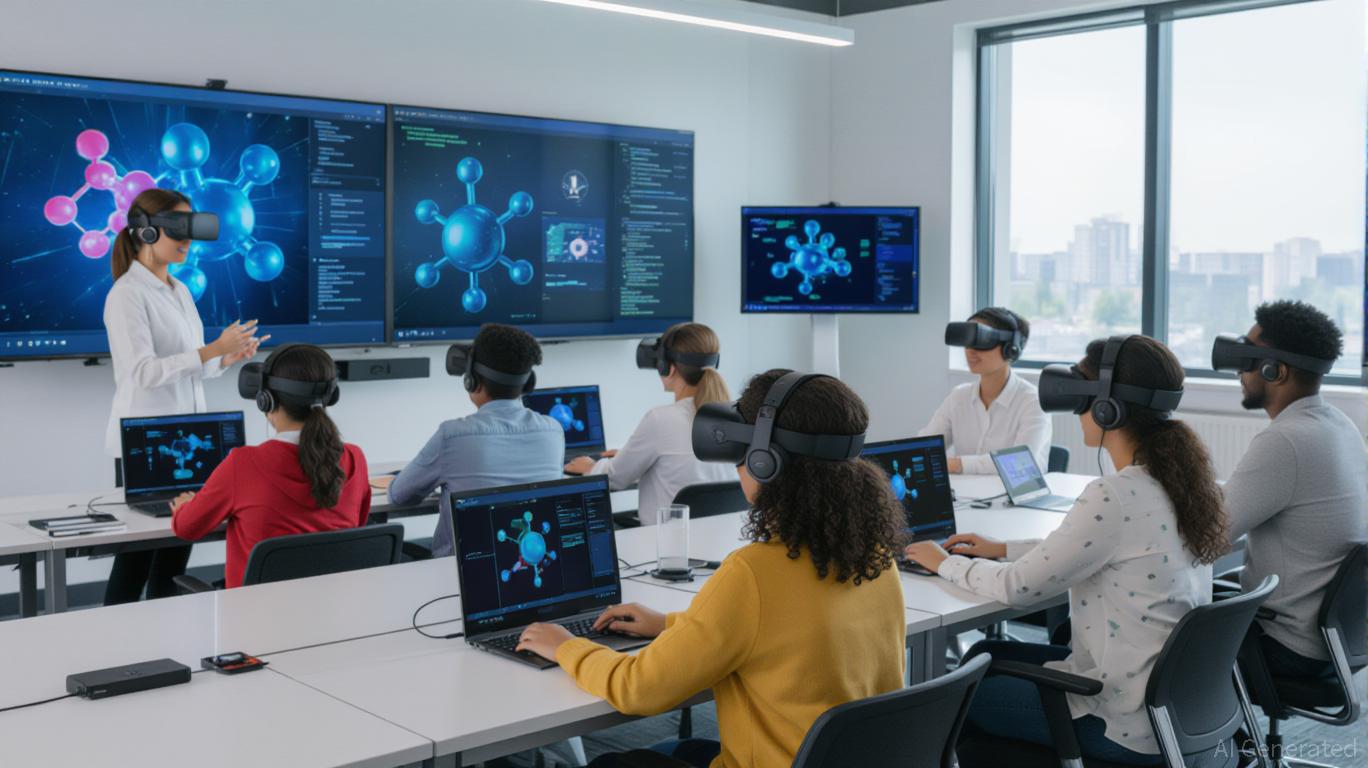The worldwide EdTech sector is experiencing a profound transformation, propelled by the pressing necessity to address skill shortages in STEM (Science, Technology, Engineering, and Mathematics) and cross-disciplinary education. As industries adapt to the requirements of a digital-centric economy, targeted investments in educational technology platforms have become essential for developing a workforce ready for future challenges.
A report from
Grand View Research indicates that the global EdTech market reached a valuation of USD 163.49 billion in 2024, with expectations to expand at a compound annual growth rate (CAGR) of 13.3%, hitting USD 348.41 billion by 2030. This surge is not solely a result of tech advancements but also a response to the pressing needs of the labor market, where
STEM-related jobs are forecasted to increase by 10.4%
between 2023 and 2025—nearly three times faster than non-STEM roles.
The STEM Imperative: Market Dynamics and Innovation
The STEM-focused EdTech market is leading this evolution. By 2025, the global K-12 STEM education sector was estimated at USD 44.35 billion,
and is expected to climb to USD 115.13 billion
by the close of the forecast period. This rapid expansion is driven by several factors: increasing demand for skilled professionals in advanced technology fields, the widespread adoption of online education, and the merging of interdisciplinary teaching methods that combine experiential problem-solving with teamwork.
Cutting-edge platforms are transforming how education is delivered.
AI-powered adaptive learning solutions
, including Squirrel AI and Microsoft's Reading Coach, allow teachers to customize lessons for each student, boosting engagement and knowledge retention. At the same time,
immersive tools such as virtual reality (VR)
and augmented reality (AR) are increasingly used in Career and Technical Education (CTE) to recreate practical experiences, from virtual biology dissections to intricate engineering simulations. These innovations not only improve educational outcomes but also better align curricula with industry needs,
as shown by the VR-in-Education sector’s anticipated value of USD 31.28 billion
in 2025.
Strategic Investments and Workforce Impact
The financial outcomes of investing in STEM EdTech are equally impressive.
From 2023 to 2025, global ed-tech firms secured USD 1.5 billion
in U.S.-based funding rounds, marking a 25% rise over the previous year. This influx of capital has enabled the expansion of platforms that deliver clear workforce benefits. For example, Boston-based education technology companies
saw a 22% growth in employment in 2023
, while startups in Silicon Valley sped up their product launch timelines, cutting time-to-market by 30% compared to their international peers.
Real-world examples highlight the significant advantages of these investments. Solutions like Dreambox Learning and Labster, which utilize adaptive technologies and virtual laboratories, have led to notable gains in student achievement.
A 2024 analysis by the U.S. Bureau of Labor Statistics found
that STEM professionals, with a median annual salary of USD 101,650 in 2023, earn twice as much as those in non-STEM fields. Additionally, corporate training initiatives that incorporate AI and gamification have yielded impressive returns.
One major financial firm experienced a 250% increase in productivity
and gained an extra USD 3.5 million in yearly revenue after launching a STEM-centric employee training program.
Addressing the Skills Gap and Equity Challenges
Despite these positive trends, significant obstacles remain. The United States
is grappling with a severe deficit of skilled STEM professionals
, with an estimated 3.5 million positions likely to go unfilled by 2025. Likewise,
46% of European Union companies report difficulties
in finding applicants with adequate digital and STEM expertise. These shortages are made worse by unequal access to quality education.
Just 20% of U.S. high school graduates
are ready for college-level STEM studies, and less than half of schools provide computer science courses.
Targeted investments are working to close these gaps through programs like micro-credentials and digital badges, which offer flexible, stackable certifications tailored to industry requirements. For instance,
platforms including Skillup and PrakitaAI
are establishing direct routes from education to employment, focusing on areas such as cybersecurity and financial technology. Moreover,
corporate social responsibility initiatives, such as distributing STEM kits
, are sparking early interest in disadvantaged communities while also boosting brand image and supporting long-term talent development.
The Road Ahead: Trends and Opportunities
Looking ahead, the EdTech industry is set to emphasize comprehensive AI adoption, sustainability, and ethical practices.
AI education programs are becoming increasingly popular
in K–12 settings, ensuring both students and teachers can use these technologies responsibly. At the same time, the emergence of hybrid learning—which blends online convenience with face-to-face collaboration—is making education more accessible for remote learners and working adults.
Investors should also pay attention to regulatory developments, especially as concerns about data protection intensify. Educational institutions are turning to encryption and multi-factor authentication to adhere to regulations like GDPR and FERPA. Nevertheless, the potential gains are considerable. With global upskilling initiatives expected to surpass USD 500 billion in 2024, prioritizing STEM and interdisciplinary education is more than a trend—it is a strategic necessity.
Conclusion
The intersection of technological progress, workforce needs, and targeted investment is reshaping education’s future. EdTech platforms focused on STEM and interdisciplinary learning are not only closing skill gaps but also making high-quality education more accessible. For investors, the key lies in backing projects that deliver measurable results—whether through AI-based customization, immersive training, or initiatives that promote equal access. As the market continues to grow, those who align their investments with the shifting demands of the global economy will be best positioned to benefit from the next era of educational innovation.
